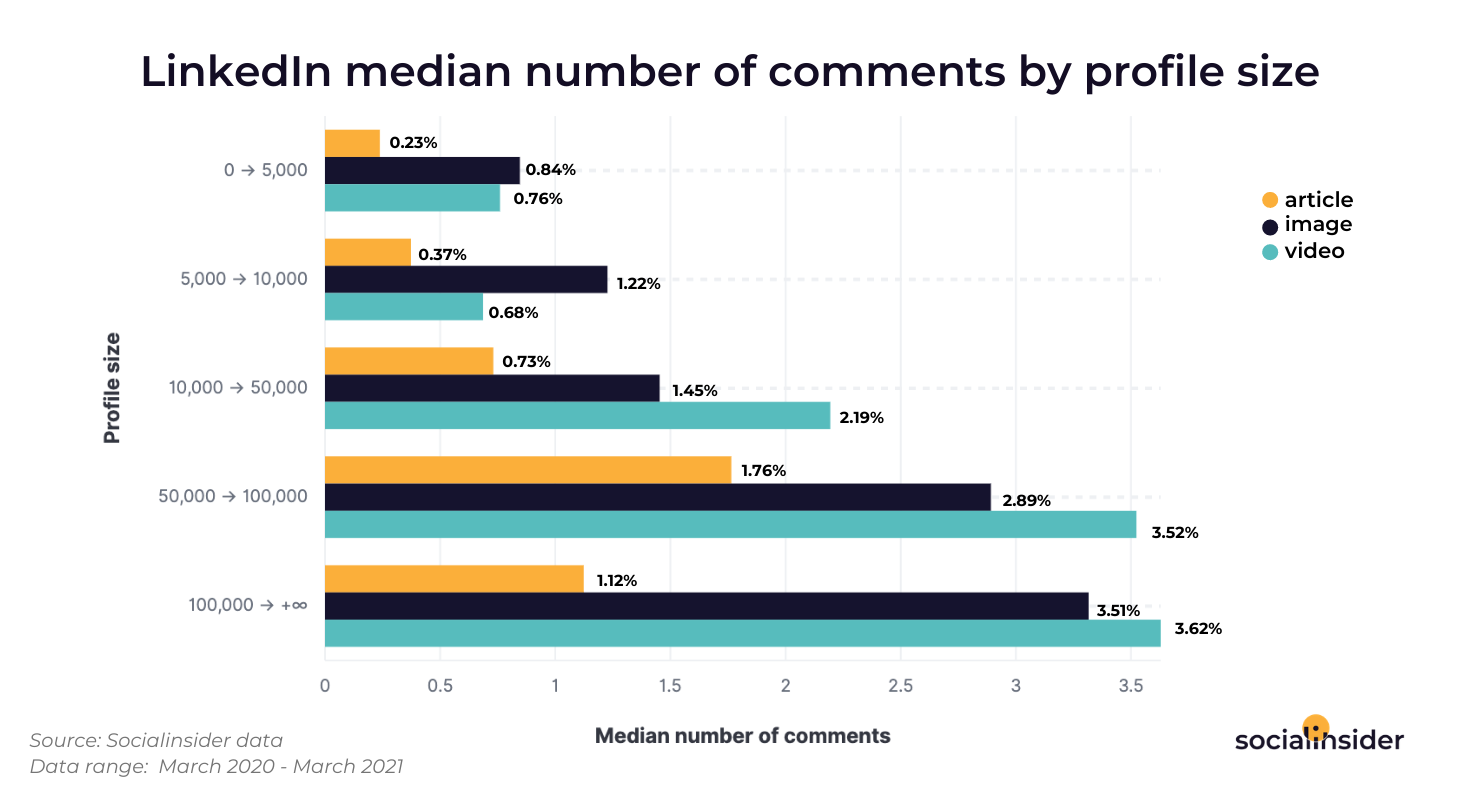
Some may say social media is one of the best ways to promote your brand or business. It’s also easy to use, and all you have to do is upload some photos and write captions.
Could it be true or that simple?
The truth is… we live in a world ruled by content. Quality content.
People expect to read exciting topics every day, see creative posts, and feel like they are part of a community.
Unfortunately, the main disadvantage of the entire online ecosystem is that thousands of social media posts are added per second.
And there’s another thing all content creators should take into consideration: users tend to easily forget the information they read or see on social media channels.
Creating high-performing social media content can be challenging and time-consuming but not impossible.
Today, you’ll discover how to create social media content that brings value to your brand, achieve engagement from your audience, and help you drive results in this so competitive environment
Let’s start!
How to get better at social media content
- What is social media content?
- What is quality content?
- Why do you need a social media strategy?
3.1. What is the meaning of social media content strategy
3.2. How to start building your social media strategy - 10 tips on how to create content for social media
4.1. Attend conferences and read industry updates
4.2. Craft eye-catching infographics
4.3. Use videos and animations
4.4. Collaborate with influencers
4.5. Run social media contests
4.6. Share images that trigger emotions
4.7. Write attractive and neat captions
4.8. Build a social media content calendar
4.9. Use Facebook groups to grow your business
4.10. Measure results
1. What is social media content?
Social media content generally means anything that an individual or company has posted or shared with others on social media platforms, such as Facebook, Instagram, Twitter, or YouTube.
It can be a text, a photo, video, links, infographics, or gifs.

However, while almost anything can be social media content, that doesn’t necessarily mean it should be considered good social media content.
Before getting to the part where I’ll list the ten tips on how to create content for social media, let me give you a brief explanation of what quality content means.
Keep reading to find out! 😉
2. What is quality content?
Whether you’re a social media newbie or have tons of experience, you’ve probably heard those working in your industry talking about the need to create high-quality content.
But what does it really mean?
The keywords and phrases that describe quality content are attractiveness, informative potential, and ability to communicate the message clearly to the target audience and bring them a benefit.

Chuck Hester, client services director at Converge Consulting, quoted by Content Marketing Institute, says that quality content is “anything that adds value to the reader." Moreover, “it’s industry-focused, not trite and trivial” and “it increases a reader’s understanding of a topic in a way they may not have been aware of.”
Thus, if you want to make sure that you deliver high-quality content to your audience, Chuck Hester advises you to ask yourself the following questions:
- Is my content relevant?
- Is my content educational?
- Does my content bring value?
3. Why do you need a social media strategy?
Social media content mirrors your brand, meaning that it directly represents its tone and quality.
That’s why it’s essential to maintain a consistent and aesthetically pleasing look and feel throughout your feed.

Also, by planning and following a social media strategy and paying close attention to each detail, you demonstrate that your products (brand or services) are not only high-grade, but also that you know and understand your audience very well.
3.1. What is the meaning of social media strategy?
A social media content strategy implies more than posting images or sharing links.
A social media strategy can be defined as a master plan for creating, publishing, and maximizing engagement across social media channels to achieve the objectives of a brand or company (like improving brand awareness, lead generation, driving traffic, and creating viral effects).

Ultimately, a social media marketing strategy should always be data-driven and contain the tactics you’ll use to reach the goals and the metrics you’ll track to measure your results.
Tip: The content of your social media strategy should answer the what, when, how, and why.
3.2. How to start building your social media strategy
It’s said that the beginning is always the hardest.
But it shouldn't be that way.
When working on your marketing strategy, make sure you always:
Define your business goals
You can set one or multiple goals within your social media strategy. Furthermore, it’s important to keep in mind that each of your goals should be S.M.A.R.T (Specific, Measurable, Attainable, Relevant, and Time-bound). They must be aligned with your marketing objectives and will help you track your business’ progress.
Identify your target audience
It’s fundamental to know who your target audience is, what they’re looking for on social media, and where to find them.
By gathering data such as location, gender, age, education, interests, or job title you’ll get to know your fans better, understand how to address them, how to customize the content according to their needs, adjust your tone of voice, and how to engage them on your social media pages.

For example, TikTok’s audience is much younger, while on Facebook and Instagram, users between 25 and 34 make up the largest user demographic, according to the latest Statista report.

Learn everything about your competition
Try to obtain as much relevant information as you can about your competitors: on which platforms are dominant, what type of content they share, how they interact with their audience, how many page likes and followers they have, how often they post, how many hashtags they use etc.
Tip: Narrow down the list to five competitors. Choose those that have the closest fit to the industry to which your brand belongs.
If you analyze how your competitors use social media, you can learn from them, do things better, develop something that truly stands out, and come across exciting trends.
Conduct a social media audit
Conducting a social media audit means performing an analysis of all your social media accounts and using cross-channel data to build your social media content strategy from scratch, improve it, and understand the results.
It can also provide valuable insights about competition, what is your most engaging platform, and many more.

In case you’ve never conducted an Instagram audit, LinkedIn audit, or Facebook audit, maybe now it’s the perfect time to do it.
Start elevating your business!
4. 10 tips on how to create content for social media
Now that you know what social media content is and why you need a solid social media strategy to skyrocket your business, it’s time to find out how to create social media content.
Take a look below to get your dose of inspiration!
4.1. Attend conferences and read industry updates
Regardless of your level of experience in the social media field, joining conferences represents a great way to exchange ideas, expand your network, and acquire new knowledge from experts in your industry.

Social Media Strategies Summit + Influencer Marketing Conference (June 7-10, 2022) and Social Media Strategies Summit (October 26-27, 2022) are just two of the events dedicated to social media managers and social media specialists.
Use the code "socialinsider10" to save 10% off registration on any of their 2022 corporate events.
The main subjects that will be covered during the virtual sessions are social strategy development, content marketing, video, audience growth, and brand engagements.
4.2. Craft eye-catching infographics
A scientific study has proved that people are more attracted to visuals than to a simple written text. In other words, illustrations that contain text increase people’s learning abilities up to 323%.
What does it tell us?
Yes! You’re right. People are highly visual beings. That’s why they find visual content much more interesting than plain text.
Now, speaking of infographics… There are lots of reasons why they should be included in your social media content plan. Infographics are:
- Engaging
- Informative
- Easy to understand
- Faster to read
- The most used type of content marketing used among B2B marketers in the last four years (67%)
Take a look at the infographic below. Complex information is explained in a clear way, using only numbers and a few texts.

Source: Social Media Today
So, if you need to present data and statistics compellingly and effectively, sharing infographics is always a good idea.
And you can make them without too much effort. All you need is tools like Piktochart or Canva and worthy information that can be presented to your audience.
4.3. Video is the future
Wondering how to create engaging social media content?
Then, undoubtedly, videos must be part of your social media content plan.
Being the most dominant form of online content, video is now more crucial than ever for any marketing and communication strategy.

Before creating the social media calendar, which, most of the time, is not the same for all social networks (since the audiences are different), you need to know what video formats perform best.
For example, video tutorials are among the most popular types of video content. Why?
The answer is quite obvious.
Users prefer to watch a video rather than read an article and get lost throughout the text when seeking information
It’s easy and fast to learn everything about anything.
At the same time, live, Q/A, and interview videos work better on Facebook, while behind the scene videos perform good on Instagram and are also among the most loved types of video content.
4.4. Collaborate with influencers
Influencer marketing, also known as working with content creators, is an excellent way to boost brand awareness, expand the reach of your business on social media, and create engaging and genuine content.
Over time, influencers have managed to build their own communities and gain the trust of their followers.

Influencers’ endorsement has the role of building trust for your products, giving your brand a human touch, and making their followers find your message more relevant.
Influencers can try your products and then talk about them. The reviews can be in the form of videos, stories, or testimonials.
So, if you haven’t collaborated with one till now, you might want to reconsider the idea.
Tip: Make sure that the influencer you choose to collaborate with is in the same niche and resonates with your products
4.5. Run social media contests
Hands up who loves social media contests!
Giveaways and social media contests have the potential to get tons of engagement from your followers and fans.
Users love to compete and they usually spread the word.
Therefore, it’s a great way to grow your reach, drive site traffic, generate leads, and gain some new followers.

Just pick a nice idea, set your goals, and follow the social media platform rules where you run the contest.
Do you need some ideas? Here are some to inspire you:
- Photo contests
- Creative answer contests
- Ask your followers to share the post or tag their friends for a chance
- Challenge contests
4.6.Share images that trigger emotions
A picture worth more than 1,000 words, it is said. And I agree. But only if it’s the right picture.
Posting creative and well-designed photos is not enough. Emotions like anger, happiness, romance, sorrow, or joy have the power to engage people and make them share your content.
One study has revealed that people remember only 10% of what they hear once 72 hours have passed.
However, if you pair a picture with your material, they can retain 65%, even after three days.

Though, be careful when you decide to post a powerful, sensitive picture, especially if the subject is not related to your brand.
Users might find it inappropriate, and there could be no way to bring them back on your profiles.
4.7. Write attractive and neat captions
Now you’re at the stage where all your creatives and texts are ready. The next step is to post them on your social media profiles.
It's a piece of cake, right? Not really.
Captions go hand in hand with visuals. They should be like an appealing unitary whole in order to stimulate the viewer.

Captions should be related to the image, catchy but straightforward, and grammatically correct.
Let me give you some tips on how to write good captions:
- Write like a human
- Insert a break between paragraphs
- Use emojis (if necessary)
- Use relevant hashtags
- Write the most important stuff first
- Include a CTA (on occasion)
4.8. Build a social media content calendar
A social media content calendar can help you visualize better your ideas and make the process of posting more manageable.
I know, it might seem a bit overwhelming to fill in a calendar with posts for an entire month.
No matter how much imagination you have, there are days when you can run out of ideas.
But don’t panic and take it step by step!
The main advantage of using a social media calendar is that you can schedule the posts in advance.

For example, reserve a day to create the social media content plan for the first two weeks of the month.
Then, you can continue with the posts for the remaining weeks on another day. When you have them all done, you can start scheduling them.

There have been many discussions about the times when to post on each platform and how frequently you should post.
According to Sprout Social, the best time to post on Instagram would be Tuesday between 11 a.m.–2 p.m. and Monday through Friday, at around 11 a.m., and on Facebook would be Monday through Friday at 3 a.m, and Tuesdays at 10 a.m.
If you want to get more visibility, data suggests to post:
- 1-2 times per day on Facebook
- 3-10 times per day on Twitter
- 1-3 times per day on Instagram
- 2-5 times per day on Instagram Stories
- 3-20 times per day on
- 1-2 times per week on LinkedIn
4.9. Use Facebook groups to grow your business
Facebook groups can offer great marketing potential to any business that wants to attract loyal customers or increase awareness.

Through Facebook groups, you can have direct access to your target audience, see what your customers think about your products, offer support to your clients, connect with them on a much personal level, and understand their needs.
Building a solid and big community takes time, but once you have all your fans together in a Facebook group, it’ll be easier to interact with them.
How to keep your community engaged:
- Organize live video sessions
- Discuss current events related to your niche
- Run contests
- Ask for their opinion
- Let them know how their feedback helped with improving your services or products
4.10. Measure results
Your posts are now scheduled, and some of them are already on your social media platform.
But how can you know your social media content strategy has been successful if not by measuring your efforts?
The most important social media metrics you should track are:
- Awareness - represents the number of times people saw your content as told by impressions and reach
- Engagement - is the sum of interactions, shares, and comments for the posts published in a specific time period
- Conversions - represents the total number of users who take the desired action after clicking on a link in your post

These metrics are provided by social media analytics tools, such as Socialinsider.
By measuring data each month, you can figure out what has performed best, what you need to do to improve your content plan, and accurately adjust your social media strategy.
Final thoughts
The topic of how to create social media content is ample, and what I have enlisted here could no longer be available next year as new trends and features specific to each platform appear.
Despite this possibility, I think we can draw some interesting conclusions:
- Social media gives brands the opportunity to connect with their audiences and create strong relations.
- It’s not enough to only know who your audience is. It’s necessary to understand it and get engaged.
- The content you share must resonate with your followers.
- Quality content should bring value.
- Building a social media content strategy is an ongoing process. It implies constant research, creative ideas, planning, keeping-up-with trends, scheduling, and monitoring.
Are you ready to start building your social media content strategy?
Related articles:
* This article was originally published here
No comments:
Post a Comment